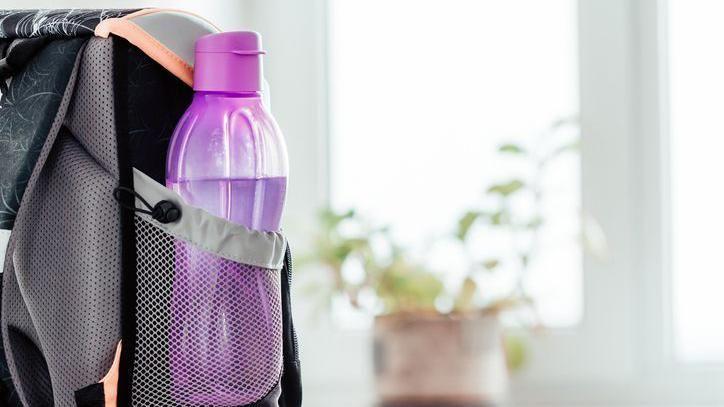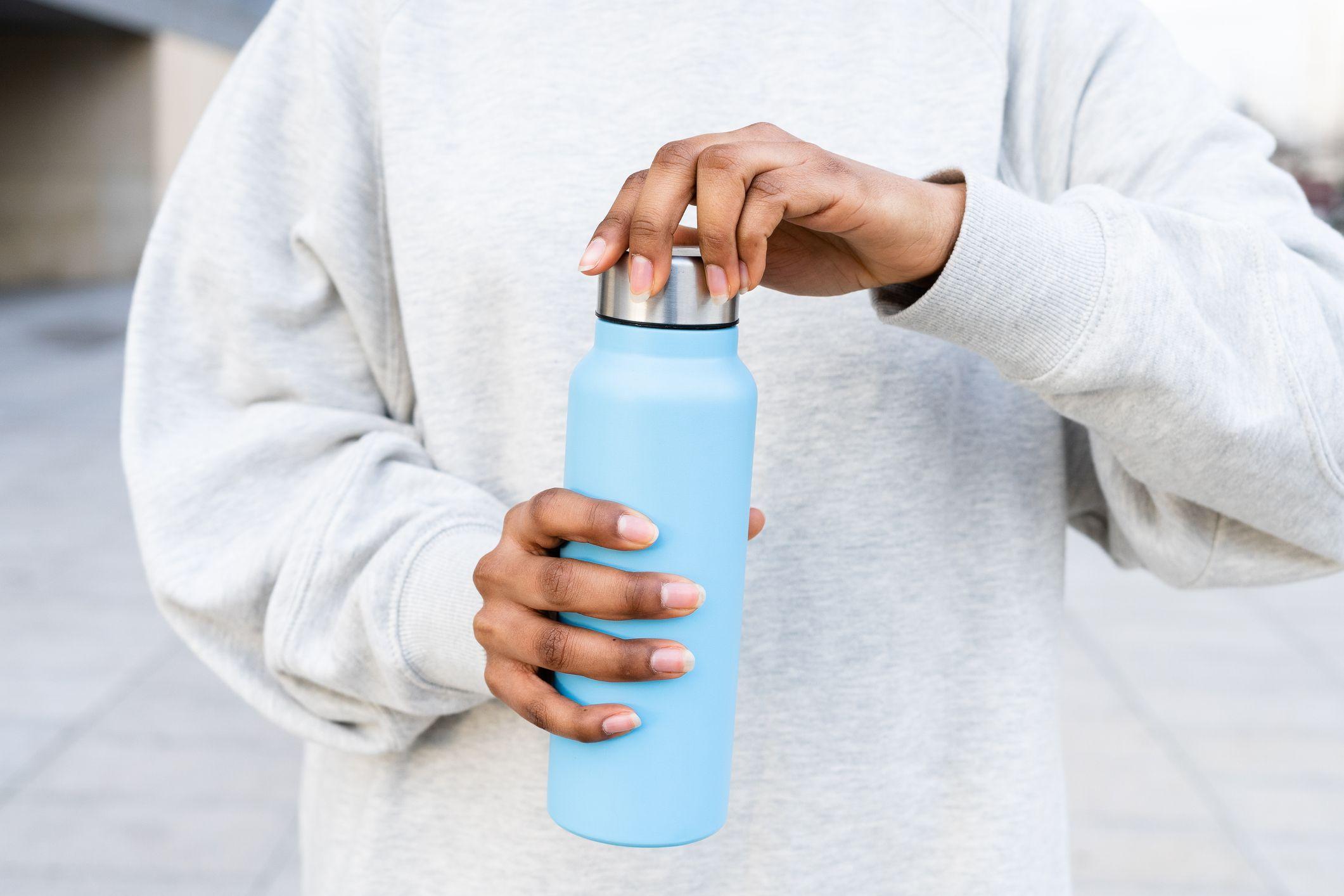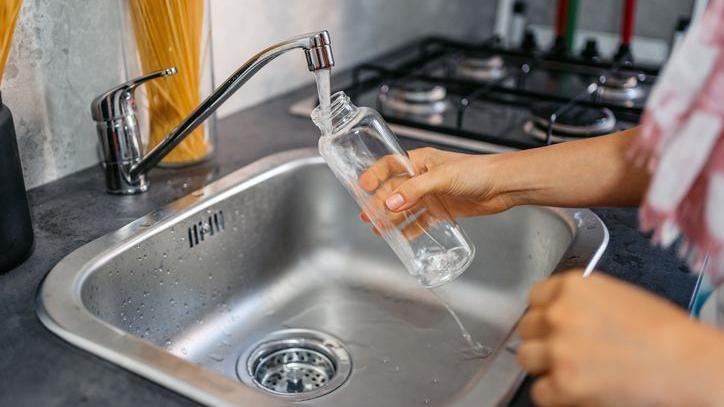



Carrying a bottle of water in your bag represents a double benefit: on the one hand, the habit guarantees a good level of hydration, something very important in terms of health; Secondly, it avoids excessive consumption of disposable materials, a positive point in terms of sustainability.
But have you ever stopped to think about the hygiene of this utensil?
Your water bottle could be dirtier than a toilet seat!
“Many people believe that since there is only water there, they just need to rinse it under the tap before filling it and the bottle will be clean.”observes physician Rodrigo Lins, consultant to the Brazilian Society of Infectious Diseases.
But this is far from a reality, research shows. If not clean, these containers They can accumulate many microorganisms, such as bacteria and fungi.which can be harmful to health.
A study carried out by WaterFilterGuru, a company specialized in water quality control in the US, calculated that a single reusable bottle can carry around 20.8 million CFUs (Colony Forming Units).
UFC is a measure that indicates the quantity of viable microbes, capable of forming a colony, on a given surface.
The study compared the level of contamination of a bottle with a series of other objects that, at first glance, appear much dirtier.
They found, for example, an average of 515 CFU on the surface of the toilet seat, i.e. The bottle had 40 thousand times more bacteria than the toilet bowl.
The numbers were also significantly lower for the pet food container (1.4 million CFU on average), the computer mouse (4 million) and the kitchen sink (11 million).
A study published by experts from Henan University in China concluded that there is an “extremely high level of bacterial content and rapid microbial growth” in these utensils.
The authors estimate an average of 75,000 bacteria in each milliliter of water, and these microscopic beings can multiply and reach up to 2 million/ml in just 24 hours.
Another survey, conducted at Purdue University in the United States, collected 90 bottles and found that about 15% of participants never throw away leftover water at the end of the day, and simply add more liquid the next time they use it.
The WaterFilterGuru survey also found some hygiene issues: while 42% of respondents said they wash their bottle at least once a day, 25% said they clean it “a few times a week,” while 13% admitted that this cleaning occurs “a couple of times a month.”
But what is the danger of using a dirty bottle? And how do you keep it clean?

A bacteria pit?
We must keep in mind that we live surrounded by bacteria everywhere, and that is not necessarily a bad thing (sometimes, it is something welcome and vital for our own survival).
And these microscopic beings can “invade” our water bottles in a variety of ways.
The first and The most obvious occurs when we bring our mouth close to the bottle to drink the liquid.
Some of the microbes that colonize the skin, lips, gums, teeth and tongue, such as staphylococci and streptococci, “jump” onto the utensil and begin to multiply in this new environment.
Something similar happens when we use our fingers to pick up the container or unscrew the lid to access the water.
Our hands are in contact with a series of other objects (doorknobs, elevator buttons, handrails…) that are also manipulated by other individuals.
Bacteria can also be in the bags and backpacks where the bottle is carried, in the school lockers, on the work desk, in the kitchen sink…
Once in the container, These microbes form colonies and begin to multiply in geometric progression if they are not controlled with frequent cleaning, so they can go from 75 thousand/ml to 2 million/ml in just 24 hours, according to the Chinese study.
A humid, warm and dark environment (in the case of plastic or aluminum bottles) also represents an ideal scenario for many species of fungi.
In cases where hygiene is far behind, it is possible to see the result of this microscopic “party” with the naked eye: the water accumulates some residues, which generally settle at the bottom of the bottle, and green or black stains appear on the surface of the lid or in hard-to-reach areas, such as nozzles and straws.

But then the question arises: Does having contact with this material pose any health risk?
The answer depends on a number of factors, experts say.
“We must take into account that there are ten times more bacteria than cells in our body,” explains Lins, who is also president of the Society of Infectious Diseases of the State of Rio de Janeiro.
“Depending on the amount and types of microorganisms ingestedour immune system can cope with this demand without major problems,” he adds.
In some cases, for example, when the number of microbes in the bottle is very high, the owner of the utensil may experience some milder gastrointestinal symptoms, such as nausea and vomiting.
The person can also have the bad luck that the bottle is colonized by a more serious bacteria, capable of causing serious infections or difficult to treat with common antibiotics.
There are also those who are allergic to fungi and mold. In them, the use of a water tank full of these microorganisms can cause reactions, with the appearance of nasal congestion, nausea, headache, fatigue, among other discomforts.
Microbiologist Jorge Timenetsky, from the Institute of Biomedical Sciences at the University of São Paulo (ICB-USP), explains that some groups are more vulnerable and therefore need to pay more attention to the hygiene of personal items.
“This is the case of small children, the elderly or people with a compromised immune system,” he points out.

Daily cleaning for your water bottle
But, How to clean your water bottle well without complication?
The first recommendation from experts is about frequency. “Ideally, you should wash it every time you use it,” Lins sums up.
“With Cleaning once a day when you get home is enough,” Timenetsky agrees.
To control bacterial growth, just use soap and waterthe same products you use to wash the rest of the dishes.
“It is also important use brushes to mechanically eliminate microorganisms,” adds the ICB-USP professor.
Then, let it dry for a while before filling it with water for a new hydration cycle.
The researchers also suggest Do not share the object with other people (each person should have their own bottle) and do not fill the container with other liquids, such as juices, sports drinks and soft drinks, as they contain nutrients that can “stimulate” microbial colonies.
And could the material used to make the bottles influence the level of contamination? Do aluminum, plastic or glass have advantages or disadvantages?
According to experts, The choice depends on each person’s preference, since these compounds have similar characteristics. from the point of view of the accumulation of microscopic beings.
The Purdue University study, mentioned earlier, found that glass bottles collected for the experiment had a lower rate of microorganisms compared to those made of aluminum.
Timenetsky suggests avoid containers with grooves or rough parts, since they can trap a greater amount of organic material.
Lins does not recommend bottles that have wooden parts (which is unusual in these cases). “Plus, the simpler they are, the easier they are to clean,” he adds.
In other words: cups and bottles with spouts, straws and other small structures are not contraindicated, but they require more attention when it comes to hygiene.
You may have to purchase small, flexible brushes to reach these smaller parts, which are almost impossible to clean with a regular sponge.

And remember that you can receive notifications in our app. Download the latest version and activate them.

